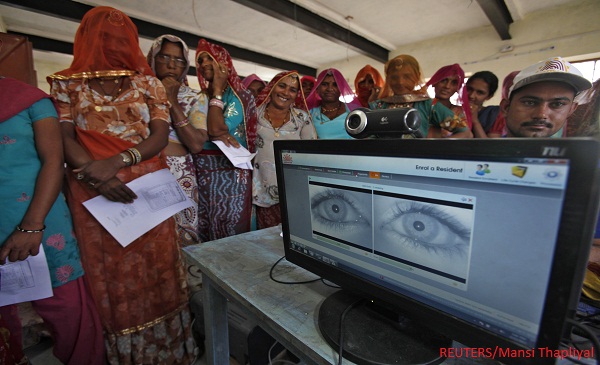
Aadhaar, India's unique identification project that gives a unique 12-digit ID to over a billion Indians has once again put the spotlight on biometrics. Biometric technology has existed long before Aadhaar and has always been shrouded in controversy. But what is biometrics, how does it work and why is there so much debate around it? Once the stuff of sci-fi like Star Trek and Minority Report, biometrics now literally holds the key to our lives. If you’re thinking fingerprints and iris scans then that’s just the beginning. BOOM tries to delve deeper and answer the things you need to know.
1) What is biometrics?
Biometrics is the science of measuring and analysing biological data. It is built on the premise that such data is unique to an individual. Biometrics is broadly divided into physiological and behavioural characteristics.
Physiological characteristics or physical traits are related to shape and composition of a part of the body.
Behavioural characteristics involve voice patterns, gait, gestures, typing rhythm, handwriting etc.
Some other biometrics that exist are ear recognition, vein recognition (vein patterns in a person’s index finger or palm) odour recognition, hand measurement etc. In addition, there is also research underway into exploring other potential candidates for biometrics such as lip movements (for example the way a person says a password).
Multimodal biometric systems are expected to be common in the future. This system uses more than one physical or behavioural trait and therefore has a higher degree of accuracy.
2) How does it work?
Capture: A biometric sample is collected through a sensing device like a fingerprint scanner or a high definition camera.
Enrolment: A software application is used to find specific points of data as match points.
The match points in the database are processed using an algorithm that translates that information to a numeric value.
Verification: The database value is compared with the biometric input and the authentication is either approved or denied.
3) What are the benefits of using biometrics?
Biometrics offers access control without having to remember passwords or carrying a key or worrying about losing a key and someone else finding it.
Biometrics also offers security to various systems and is playing an increasingly important role in national security.
4) What is it used for?
Biometrics is used in military, corporate and transport systems, government welfare schemes, point-of-sale applications, consumer electronic devices such as laptops and mobile phones, social media (Facebook’s facial recognition technology to tag photos) and also for the purpose of identification by law enforcement and surveillance, which has created much controversy and debate.
*It's important to note the difference between verification and identification
Most of the controversy surrounding biometrics is largely because the two terms are often used interchangeably.
Verification is determining if a person is who they say they are. (The biometric input is voluntary)
Identification is determining who a person is. Biometric identification can used by law enforcement, for example finger prints at a crime scene or using facial recognition software to identify an individual in vast crowds.
5) Okay, so what's the problem?
1) Accuracy of data – The data itself is not foolproof. There have been instances of systems not recognising a biometric sample or providing a false match.
2) Privacy – A big concern is around security of databases that house such data. Databases can be hacked into putting at risk sensitive data of millions. Biometric data is supposed to be encrypted and contain a self destruct mechanism when an unauthorised person tries to access it. Biometrics when linked to a person’s bank account, medical records, financial data, educational and employment history etc. is extremely valuable and can be vulnerable to misuse.
3) Surveillance – Critics of biometrics argue that governments can use such data to keep tabs on their citizens and clamp down on those who speak out or oppose them.
4) Biometric information cannot easily be changed - Unlike an online username, biometric information cannot be easily changed. If fingerprint scan data is ever stolen, a person needs to find a new method of authentication.
5) In the absence of a strong legal framework biometric technology can also be broadened to facilitate discrimination and social sorting.